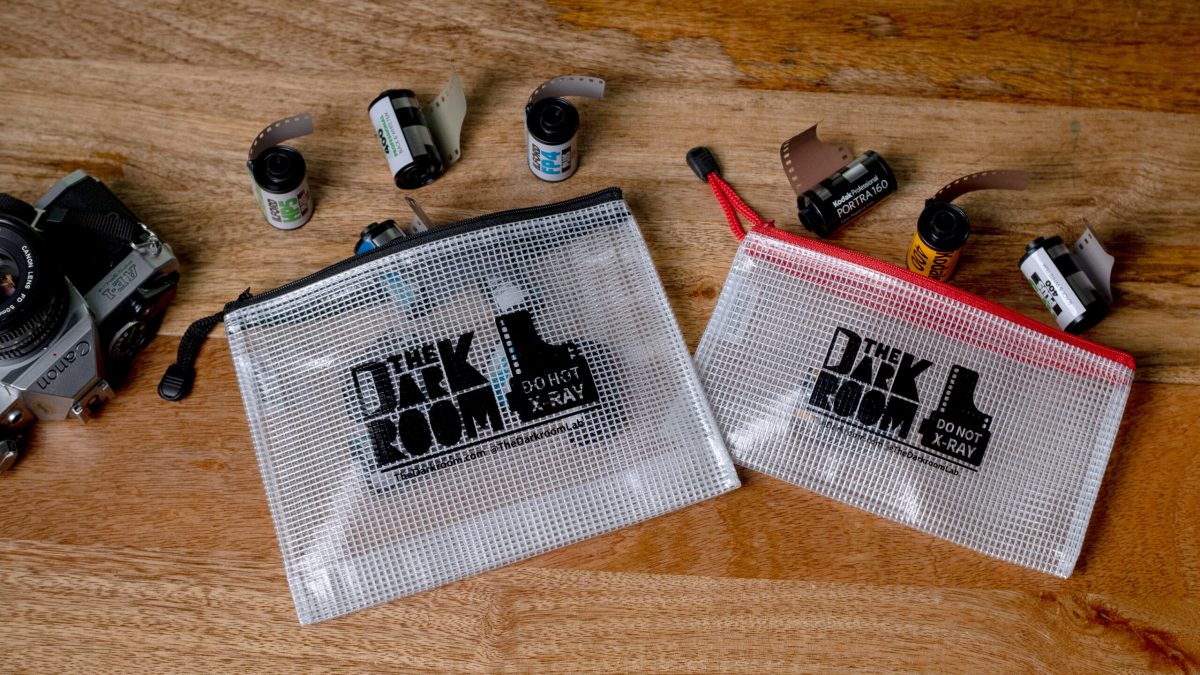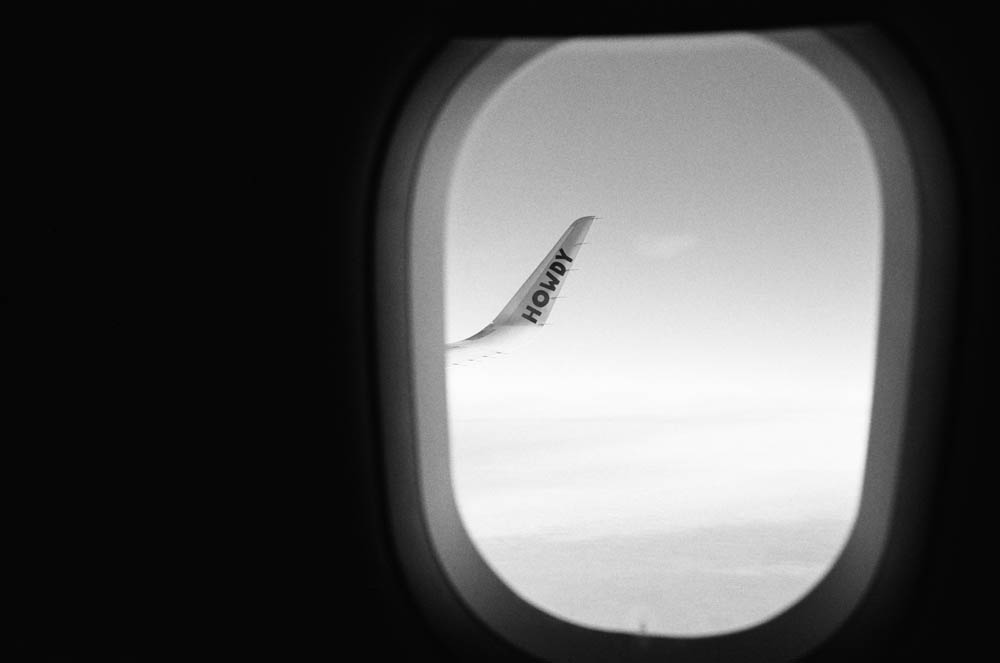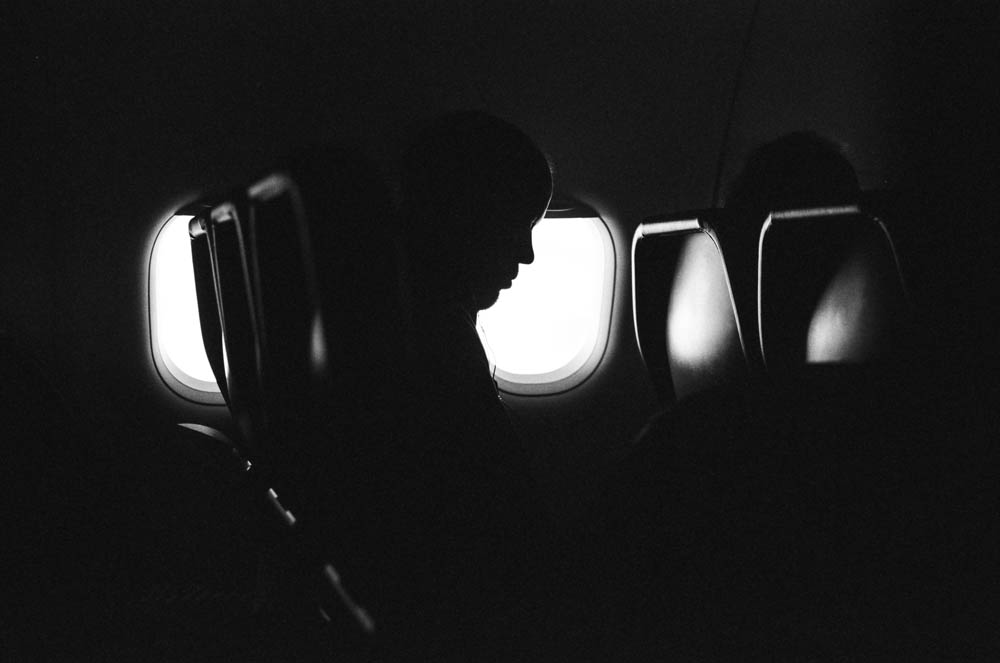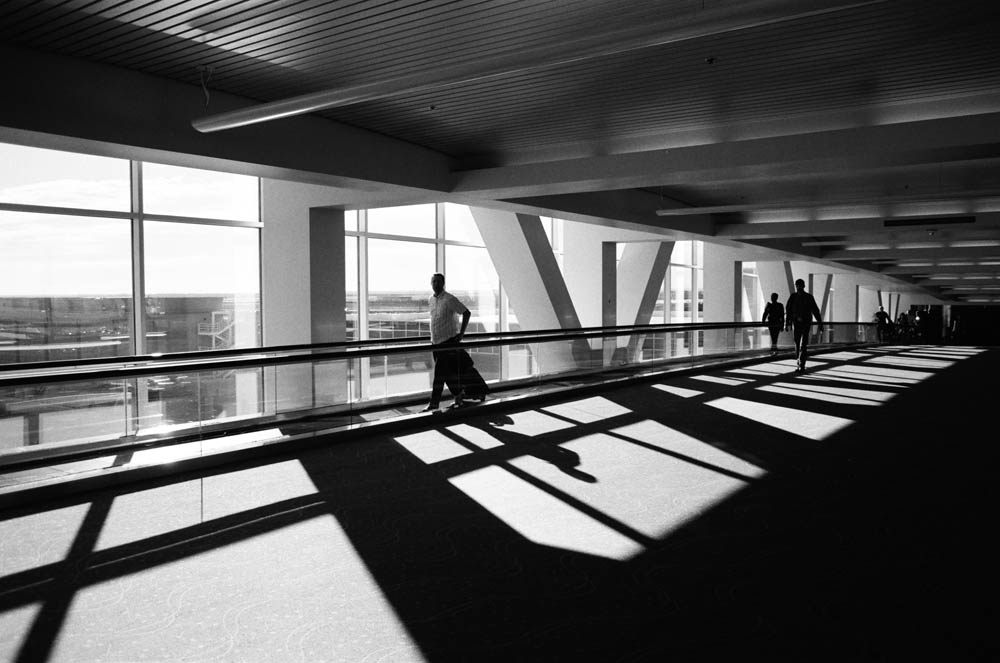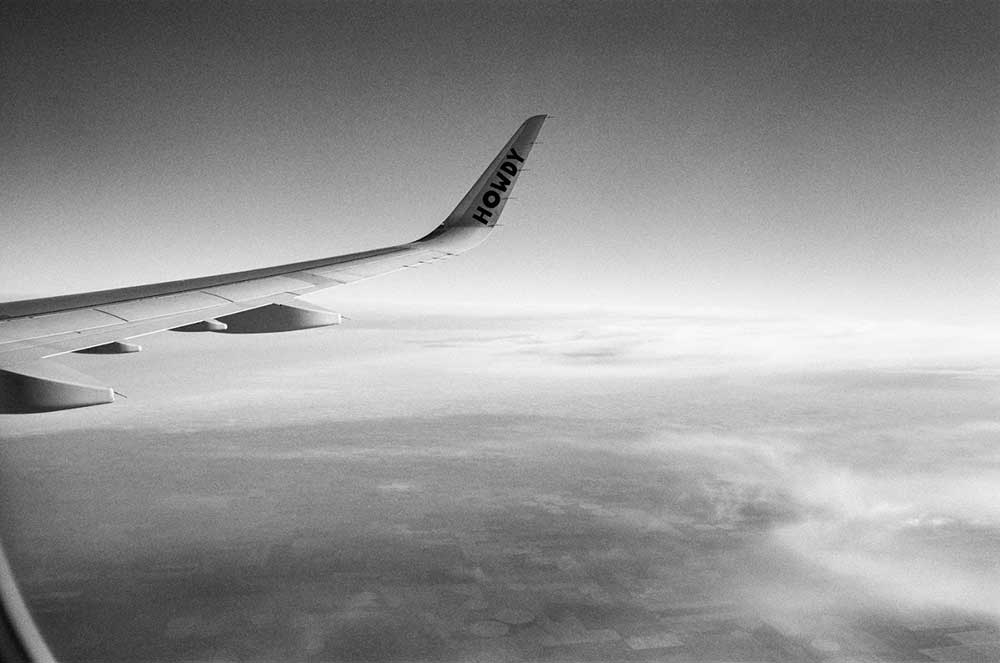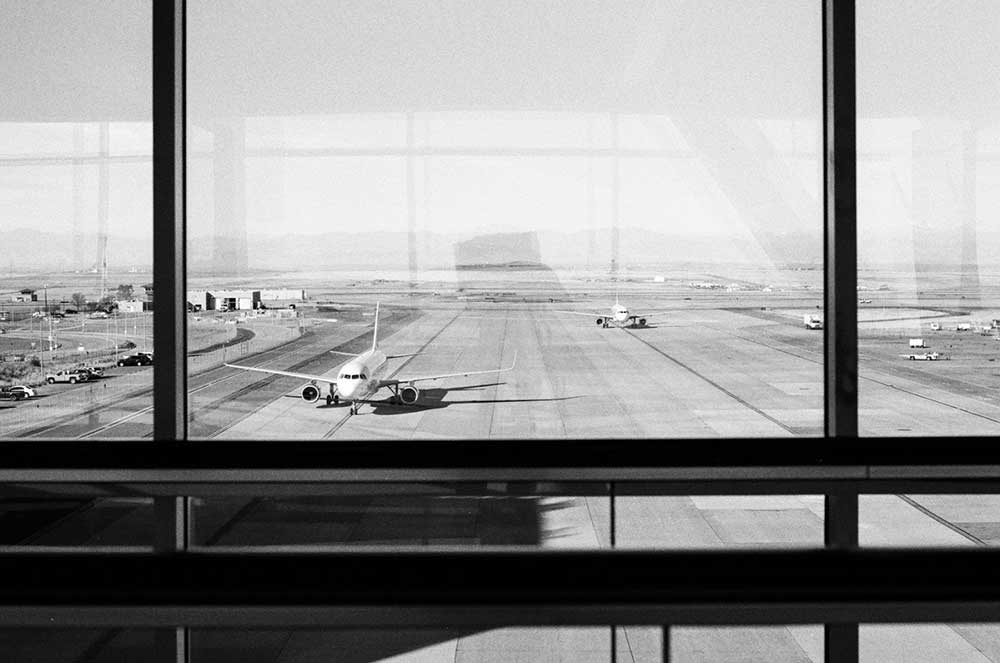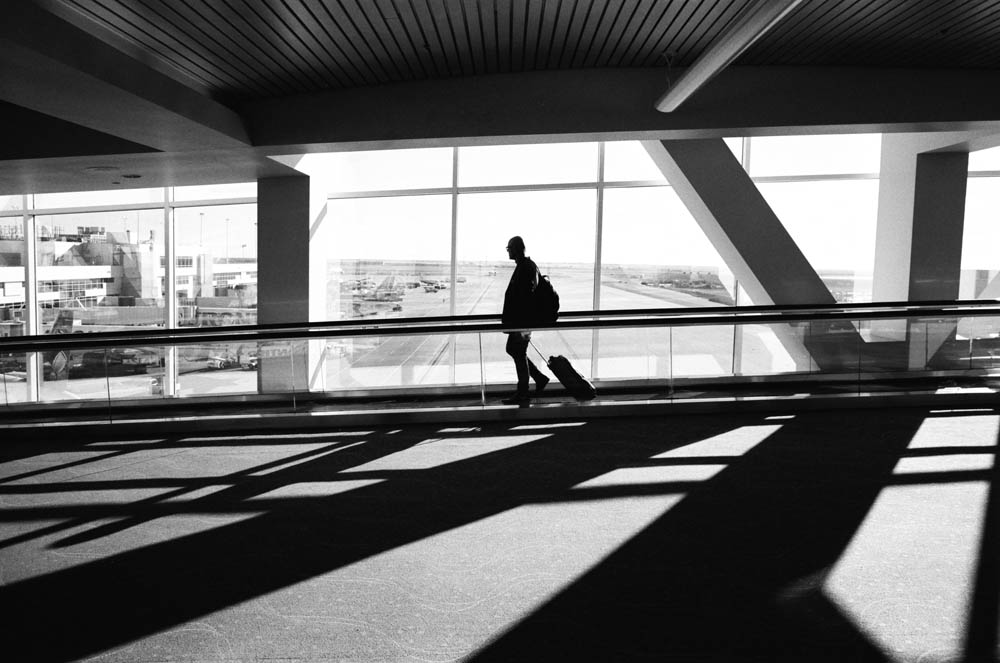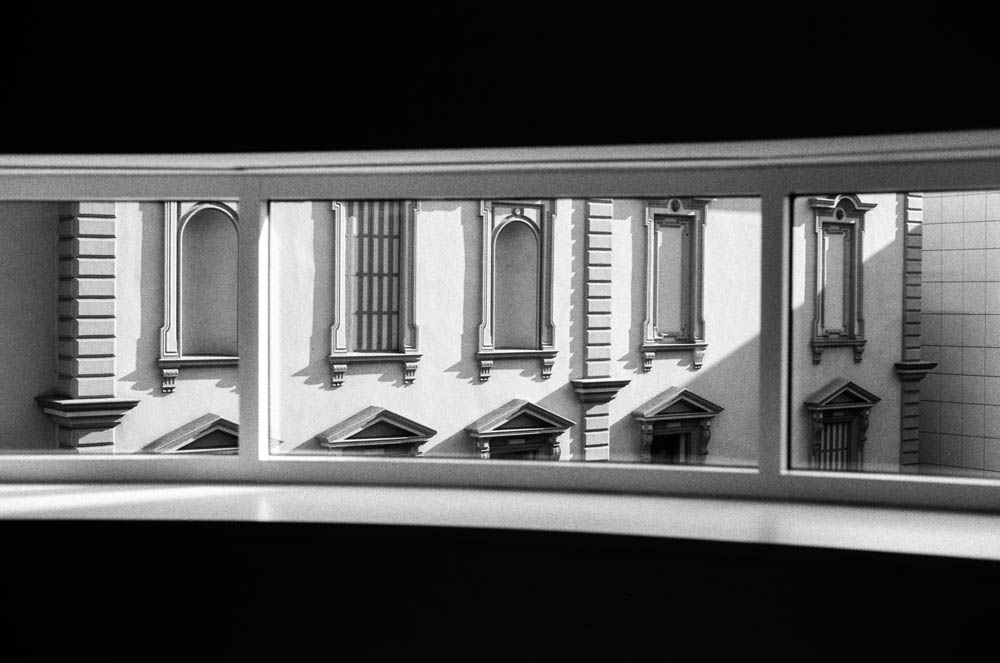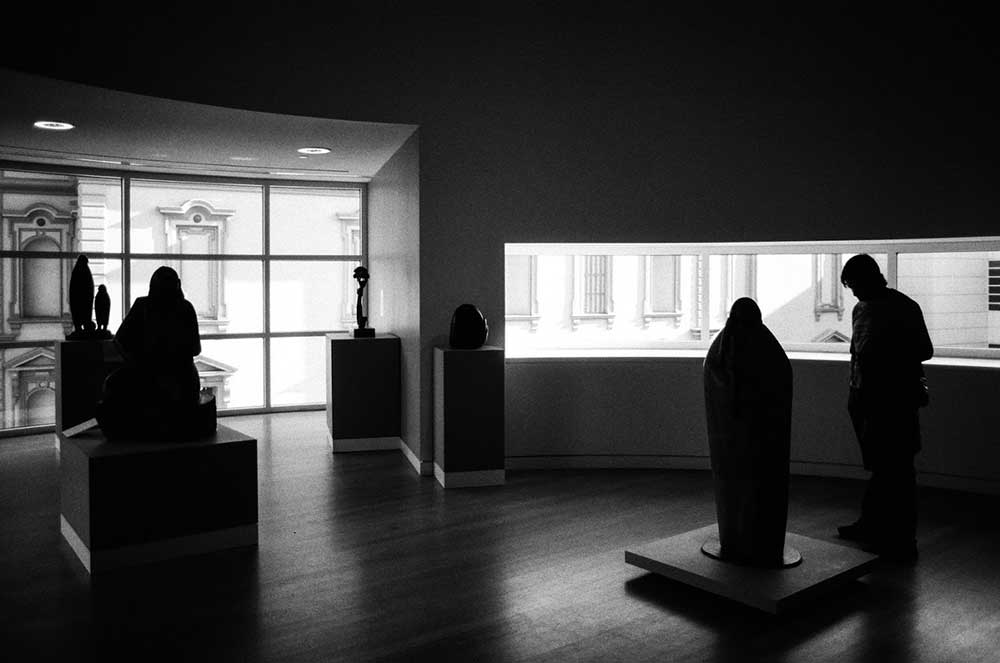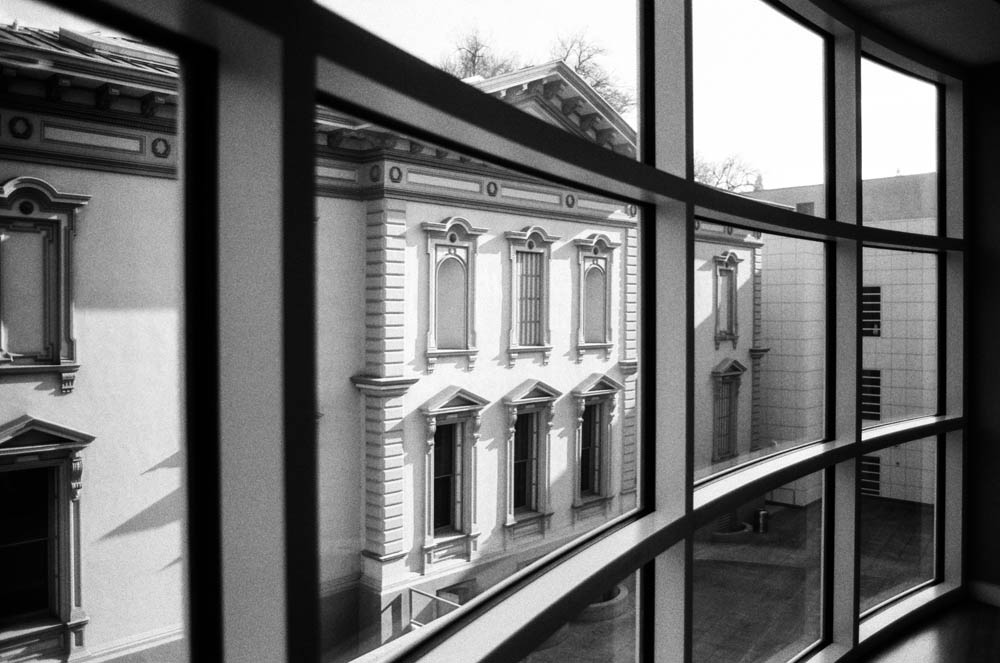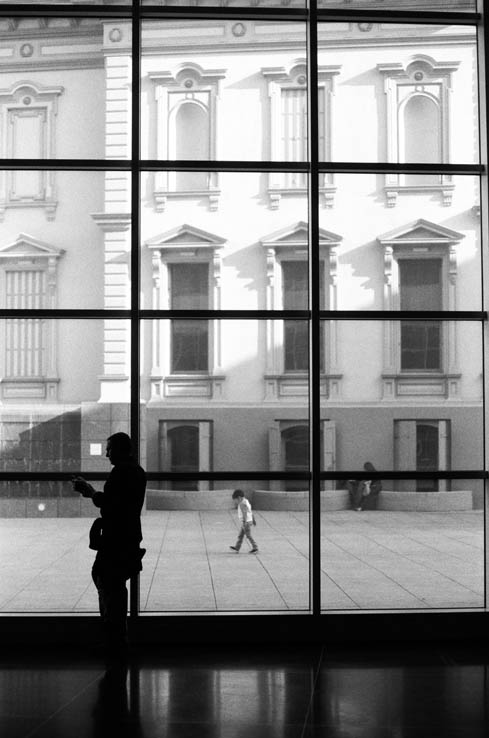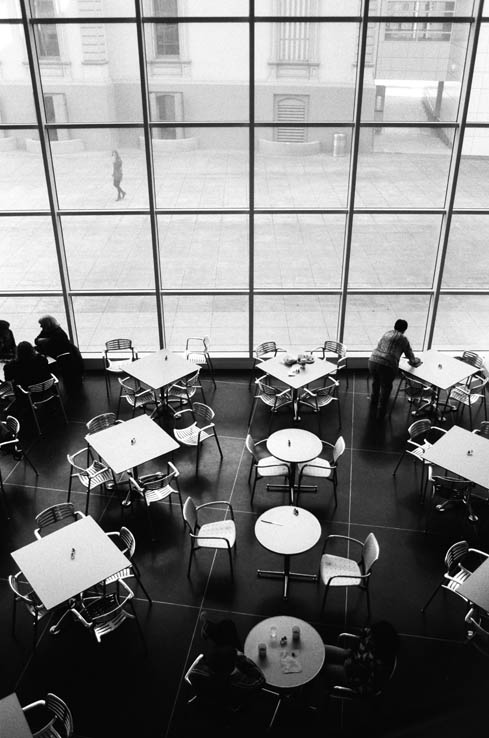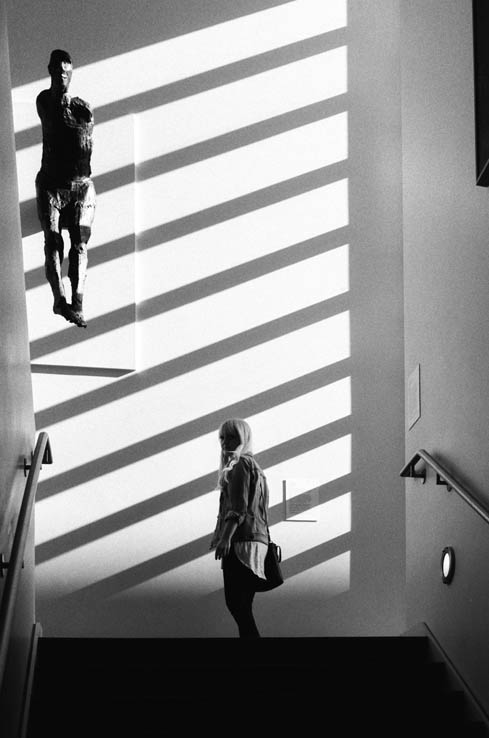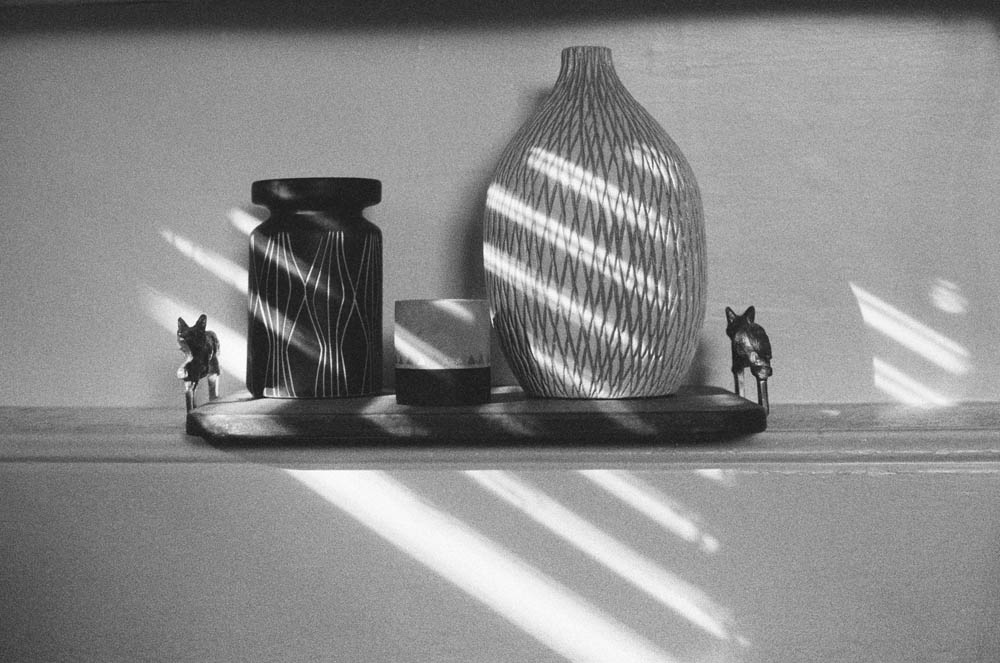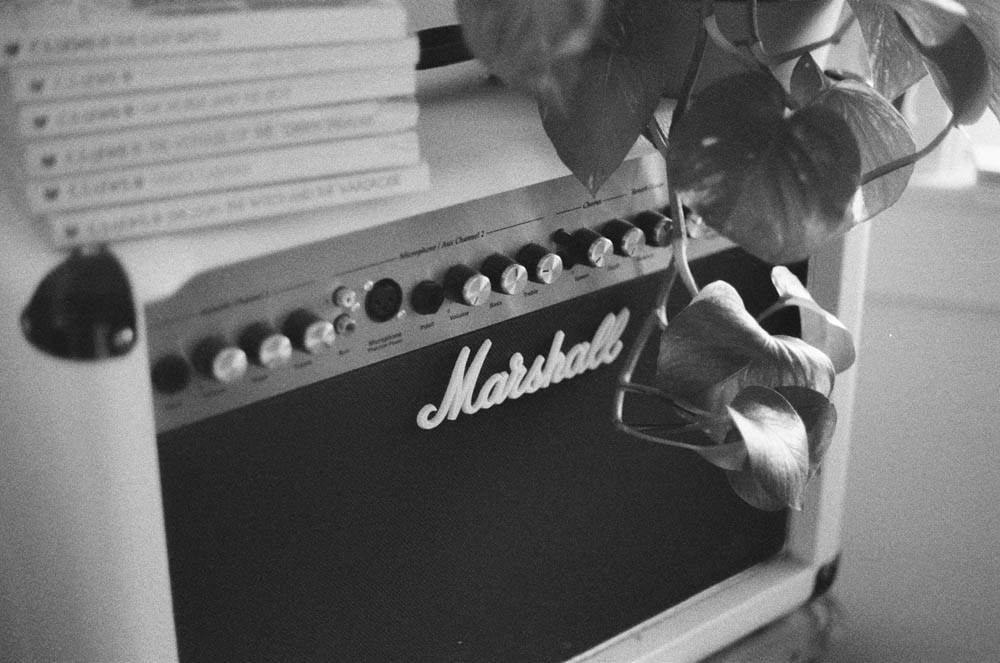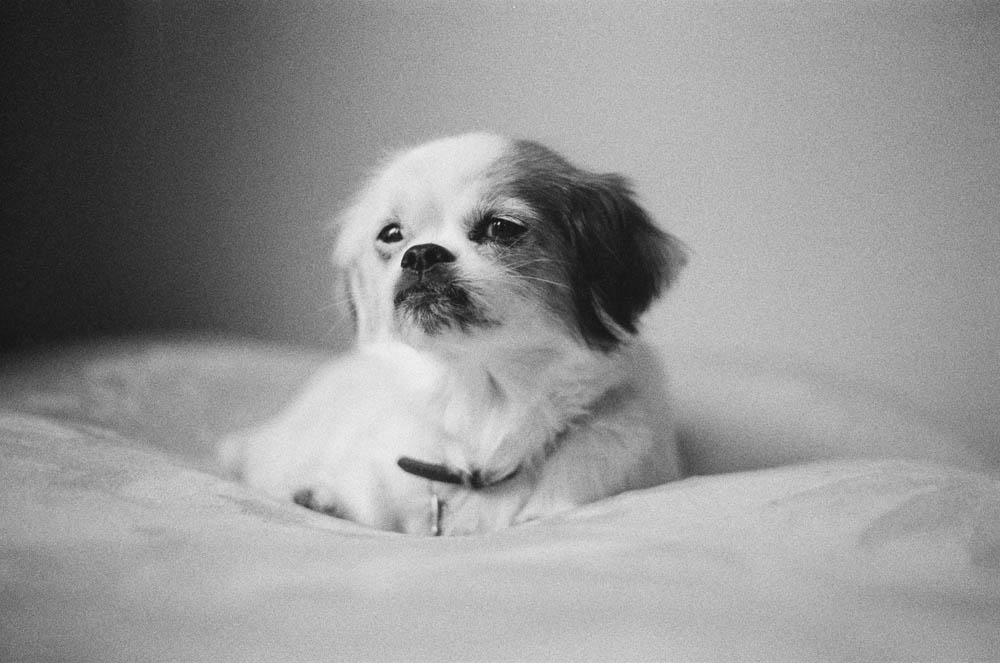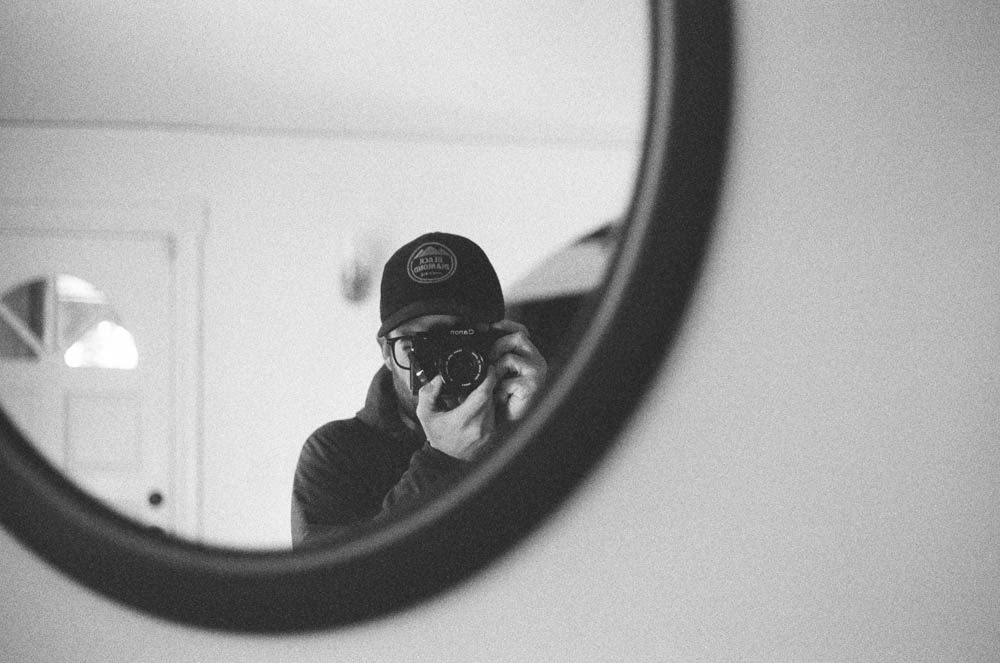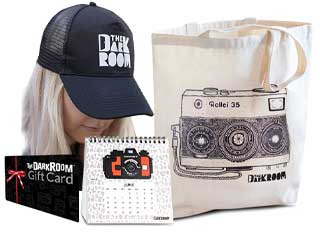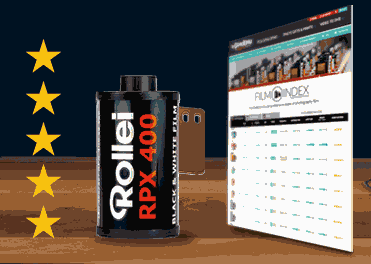Are you a film photographer who loves to travel? Then you’ve probably found yourself in an airport security line, wondering if your film is safe from TSA X-rays or worse, the new CT scanners. Can they damage your film?
It’s one of the most common questions we get from film shooters. In this guide, we’ll break down everything you need to know about flying with film – from traditional X-ray machines to the newer, more powerful CT scanners – along with practical tips to help you travel with confidence and keep your film safe through airport security.
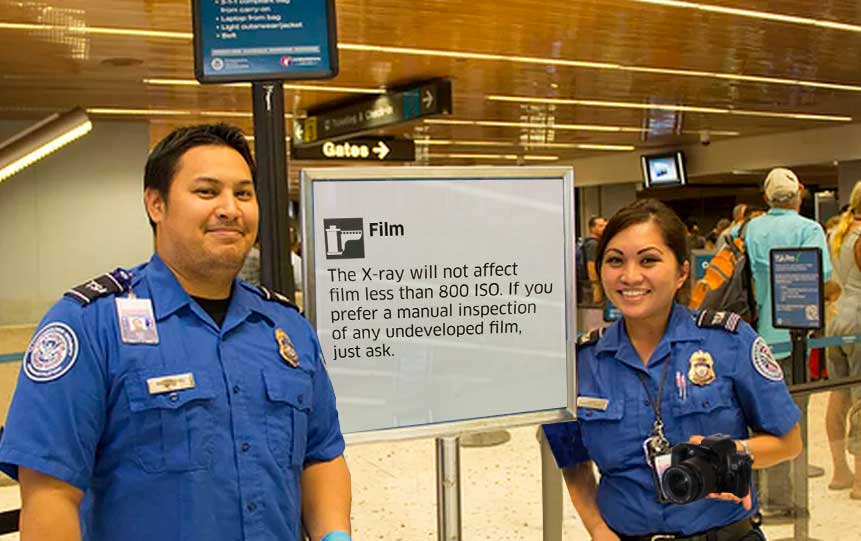
TSA CT Scanners
CT scanners are becoming increasingly common in U.S. airports and unlike traditional X-ray machines, they’re significantly more powerful. Unfortunately, that added strength can mean serious damage to your unprocessed film. In fact, just one pass through a CT scanner can damage a roll, which makes taking film through airport security a concern for film photographers.
To avoid this, we always recommend politely asking a TSA agent for a hand-check when bringing film through TSA checkpoints. In our experience, most U.S. agents are more than willing to accommodate the request – especially when you’re prepared. Internationally, it can vary by country, but it’s always worth asking.
If you’re wondering how to fly with film safely, here are a few tips to make the process smoother and faster at security:
- Remove film from all canisters and packaging ahead of time
- Place film in a clear ziplock bag or our Darkroom Do Not X-Ray Film Pouch
- Keep it easily accessible – store it in a side pocket of your carry-on
- Never put film in checked baggage (including film still inside cameras)
- Consider mailing exposed rolls directly to The Darkroom using our prepaid mailers before flying home

TSA X-Ray Scanners
Most TSA checkpoints state that film rated at 800 ISO or lower isn’t likely to be affected by standard X-ray machines, and in our experience, that’s generally true. We’ve sent dozens of rolls of film through airport security when hand-checks weren’t possible, and the results – especially with black and white film – showed little to no noticeable damage. It’s reassuring for anyone concerned about film camera airport security risks.
That said, it’s always best to play it safe. Politely requesting a hand-check is highly recommended, and here in the U.S., TSA agents are usually happy to help – especially if you have your film out of its packaging and easily accessible in a ziplock bag or our Do Not X-Ray Film Pouch.
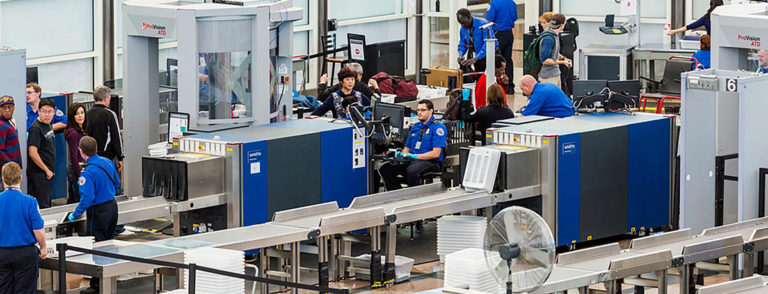
Film Pouches
Perfect for everyday use and travel, The Darkroom Travel Film Pouches come in two convenient sizes.
Crafted from durable, see-through PVC mesh, these pouches feature a zipper with a “Do Not X-Ray” label, making them ideal for airport security.
What’s the best way to safely get your film through airport security?
First and foremost – never pack film in your checked baggage. Checked bags go through high-powered CT scanners that can cause immediate and irreversible damage to your film. Even the best processing lab can’t fix film that’s been fogged by these machines.
Carry-on X-ray scanners use lower levels of radiation and typically don’t harm film under 800 ISO, but we still recommend playing it safe and requesting a hand-check—especially if your trip includes multiple flights or airport transfers.
While a simple ziplock bag works, we highly recommend using our Darkroom Do Not X-Ray Film Pouch instead. It’s much more durable and clearly labeled with “Do Not X-Ray,” making your request easier for TSA to understand. These pouches are ideal for travel and film organization, and we offer them in two sizes to fit your setup.
We do not recommend using lead-lined film bags. While they can block standard X-rays, they’re ineffective against CT scanners, which are much stronger and can see through the lead – often resulting in more damage to your film. Plus, if TSA sees a lead bag in your carry-on, they’ll likely ask you to remove it so they can inspect what’s inside anyway.
That’s why a hand-check remains the safest, lightest, and most effective way to protect your film. Just let the TSA agent know you’re carrying photographic film and kindly request a manual inspection – it’s usually not a problem, especially at U.S. airports.
What’s the best way to safely get your film through airport security?
Want to make traveling with film even easier? Skip the TSA line altogether on your way home by using one of our free postage-paid film mailers. Available exclusively in the U.S., these mailers include a pre-addressed envelope and an order form for quick and easy drop-off.
Here’s how it works:
- Place your order online at TheDarkroom.com or through our free mobile app (iOS & Android)
- Write your order number on the printed form—or fill it out by hand
- Place your film and the completed order form into the mailer
- Drop it off at any USPS location in the U.S.
No need to worry about hand-checks, X-rays, or CT scanners on the way back—your film will head straight to our lab for developing. It’s the most convenient and secure way to handle your exposed rolls while traveling.
Whether you’re flying home from a vacation, a photo assignment, or a wedding shoot, using our free film mailers gives you peace of mind—and one less thing to juggle at the airport.
What if I can’t get my film hand-checked?
If for some reason you don’t have time, aren’t permitted, or totally forget to request a hand-check for your film, don’t sweat it. The odds are in your favor. We’ve gathered a handful of our x-rayed film scans—most of which went through an x-ray a total of 6 times and still produced great results!
Kodak TMAX400 U.S. X-RAY 4 TIMES
Ilford SFX 200 EU X-Ray 6 times
Ilford DELTA 3200 EU X-RAY 6 times
Examples of how X-ray effects film in checked baggage.
Below illustrates the extreme effects of X-rays when scanned in checked luggage.
If you’re curious, here’s what to expect when your film is scanned in check baggage.
Exposure from checked baggage scanners can have an extreme effect and fog film. Fog typically appears as soft-edged bands 1/4 to 3/8 inch (1 to 1.5 cm) wide. The orientation of the fog stripe depends on the orientation of the film in the scanner relative to the X-ray beam. The X-ray banding is often linear or wavy running lengthwise or horizontally on the film. Whether the undulating wavelengths is visible depends on the photographic content. Busy scenes will obscure or lessen X-ray effects, otherwise, the photo may display some signs of wavy lines or fogging.
black-and-white negative films – Patterns in dark areas
color-negative films – Neutral or brown patterns in the dark area
slide film – Neutral or brown Patterns in the light areas
 800 speed film scanned with Examiner 3DX 6000 X-Ray check baggage scanner
800 speed film scanned with Examiner 3DX 6000 X-Ray check baggage scanner
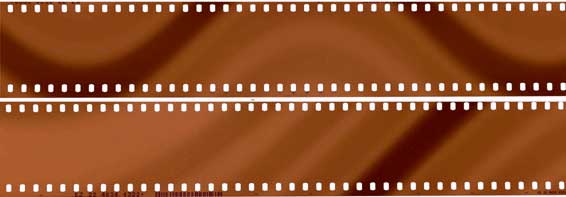 As an example of how X-ray effect film, below is an unexposed KODAK VISION 200T negative film scanned by a checked-luggage scanner.
As an example of how X-ray effect film, below is an unexposed KODAK VISION 200T negative film scanned by a checked-luggage scanner.
What’s the Best Film?
The most comprehensive index of film types; characteristics, examples, and reviews.





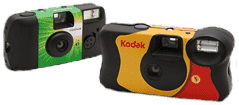
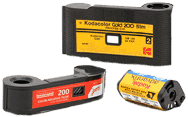
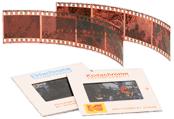



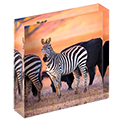
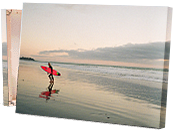

 Gift Cards
Gift Cards Film Index
Film Index FAQ
FAQ Desktop Framed Prints
Desktop Framed Prints